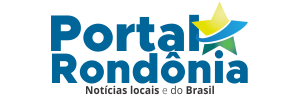English
São Paulo hosts Chico da Silva’s paintings exhibition
The mythological, folkloric, and fabulous animals painted by Chico da Silva (1910?-1985) make up the new exhibition on display at the São Paulo Pinacoteca. Entitled Chico da Silva and the Pirambu Studio, the exhibition presents to the visitors dragons, mermaids, beasts, fish, serpents, and birds that are part of this fantastic and unique universe created by him. A special room has samples of the works of other artists from the studio created by Chico.

This is the largest solo exhibition ever dedicated to the indigenous artist, and it brings together public and private collections produced between 1943 and 1984. Among the highlights of the exhibition is the set of works Caboclo Peruano, a group of drawings made by the artist between 1943 and 1944. Thierry de Freitas is the event’s curator.
The artist was born in the Amazon, in the Tagus River region, where he lived until he was 10 or 12 years old. He was the son of a Peruvian indigenous man, probably from the Campa ethnic group, and a Brazilian woman born in the state of Ceará, from where many of those who worked in the local extraction of latex left. “Chico said his father was a boatman and he used to go up and down the rivers with him. Obviously, these experiences constituted some of this imagery that he would later work with,” Freitas explained.
“Historiography conventionally dates his birth as 1910, but it is likely that this is wrong and that he was born between 1922 and 1923. So, in a way, this exhibition is also a tribute to the artist’s centenary,” said the curator, in an interview with Agência Brasil. The exhibition presents 124 works by Chico da Silva and other artists who were part of the Pirambu Studio.
Exhibition
Each room of the gallery was dedicated to a period in the artist’s life. The first room, for example, shows the beginning of his production. In this room, one can find the photo that shows Chico da Silva drawing on the wall of a house in Formosa Beach, Fortaleza, shortly before he was discovered by Swiss painter Jean Pierre Chabloz, who led him to experiment with gouache painting.
“He had a hobby of painting birds on walls of houses. This was not well regarded by their owners, but Chabloz saw these drawings, was delighted and went after the author,” said Thierry de Freitas.
There is a room dedicated to the panels—the artist’s rarest works. “The panels represent a kind of the studio’s heyday. They are the best works of Chico’s production. Due to their size and primacy of execution, they manage to show all the school’s contributions,” the curator explains.
The space dedicated to Pirambu Studio—created by the artist—houses, among others, works by Babá (Sebastião Lima da Silva) and Chica da Silva (Francisca Silva, the artist’s daughter). According to Freitas, the artists who worked in the studio have transformed Chico’s work, making it “evolve a lot in technical quality” and increasing production.
In another room, one can see the production that was only resumed after 1977, when he began to adopt new strategies for identifying and marketing his works, in response to rumors that the works attributed to him were not painted by him. “Most of these canvases have a piece of paper on the back that says: ‘I, Chico da Silva, certify that this work was painted by me’. And he also started taking pictures of himself next to the works and signing his canvases with his finger.
Pirambu
“Pirambu is a neighborhood in downtown Fortaleza, very close to Formosa beach, a low-income community. In Chico’s time, it was a favela and he lived there. When he left his job at the Art Museum of the University of Ceará, in 1963, he started to paint on his own at home. Several children, young people, and teenagers became interested in his paintings and he began to invite these people to paint with him,” the curator said.
The exhibition can be visited until May 28 in the main Pinacoteca gallery in São Paulo.








